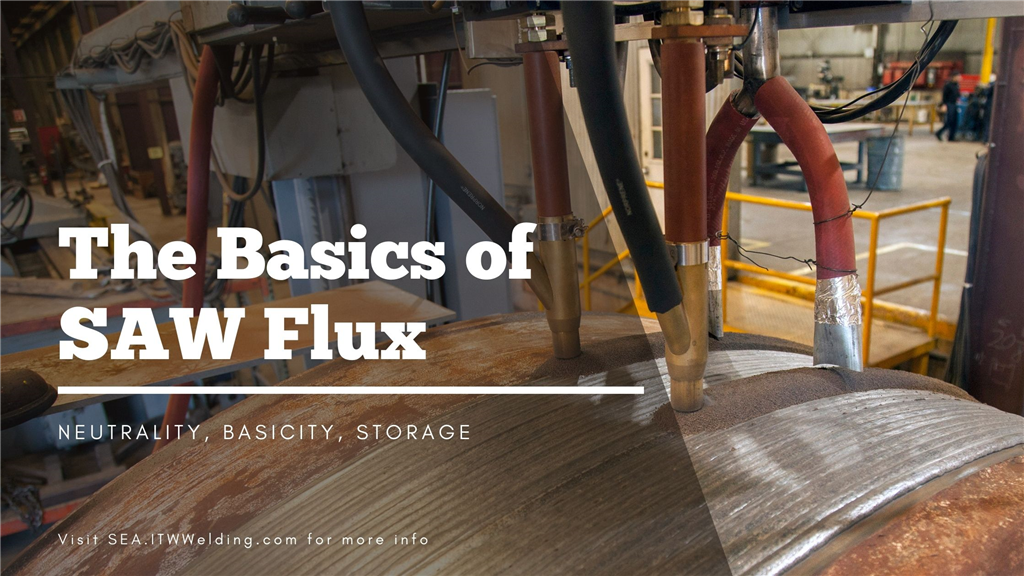
The primary purpose of the welding flux in submerged arc welding is to protect the weld puddle from contamination. In addition, some fluxes are formulated to provide additional benefits such as high impact toughness, high travel speeds etc. Being able to select the best flux for your welding operations is key to maximizing performance. In this article, we will review some of the basic terminology that product specification sheets usually use to describe welding fluxes, so that you can make a more informed decision.
Flux Neutrality
Flux neutrality describes how much a welding flux can influence the chemical composition of the weld deposit, and a flux is either neutral or active.
Because a neutral flux does not significantly influence the chemistry of the weld deposit, it is ideal for multi-pass welds on thick joints. Neutral fluxes are also not parameter sensitive and have minimal effect on the weld metal’s impact properties. On the other hand, active fluxes actively influence the chemistry of the weld deposit through the addition of elements such as silicon and manganese. Active fluxes can be used to weld over lightly rusted base materials and can also give a good bead contour even at high travel speeds. Consequently, active fluxes are typically recommended for fast single-pass or two-pass welds.
Basicity Index
The basicity of a welding flux is often expressed in terms of basicity index. A flux that has a higher basicity index contains a higher ratio of chemically basic to acidic compounds.
Typically, welding fluxes that have a higher basicity index tend to offer improved toughness properties as compared to fluxes with a lower basicity index. Toughness is the ability of the weld metal to absorb rapidly applied energy and is a critical mechanical property in industries such as offshore structure fabrication. Conversely, welding fluxes with lower basicity indexes tend to offer more appealing operating characteristics such as good weld bead appearance and easy slag removal. Therefore, selecting the best welding flux for your application is usually a balancing act between mechanical properties and operating characteristics. As a general rule of thumb, you should select a flux with the lowest basicity index that meets your mechanical property requirements.
Storage Conditions
Besides choosing the most appropriate welding flux, you should also follow the manufacturer’s storage recommendations. This can prevent moisture from building up in the flux which can lead to an increased risk of hydrogen-induced cracking in your welding operations.
Once a bag of flux is opened, most manufacturers recommend that the unused flux should be stored in a heated drying cabinet or hopper at 125oC to 175oC. If the welding flux has been exposed to a moisture source, it is necessary to redry the flux in a drying cabinet at 300oC to 350oC for at least one hour. To ensure good welding characteristics, redrying of the welding flux should only be performed between two to three times.
Make an Informed Decision
If you want to find out what is the best wire and flux combination that will give you the best balance of properties and performance for your welding application, consider speaking to your trusted welding supplier.